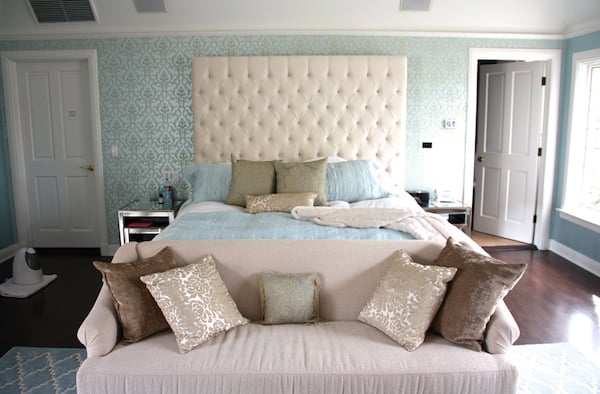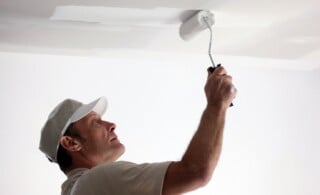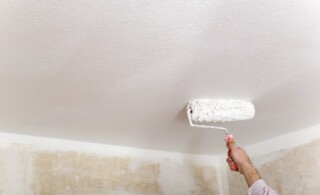
Painting over wallpaper is sometimes tricky business. If your wallpaper is in good shape, is free of any peeling, bubbling, or other loose sections, then this is a relatively easy process. If your wallpaper isn’t in such great shape (which is pretty likely if you want to hide it under a good coat of paint), then you’re in for a different project all together.
Assess the Current State of Your Paper
If you’re thinking about painting wallpaper, the first step you need to do is to assess the current state of the wallpaper you’re looking to cover. As mentioned before, this can be a make or break proposition. If your wallpaper is in top-notch condition, without any obvious blemishes, bubbles, tears, or loose sections, then the process is fairly straightforward. You’ll want to seal all visible seams with a joint sealer first, then sand or wash that down to smooth it out. After that, apply a penetrating sealer just to be safe. There is a risk any time you are painting over wallpaper that the moisture in the paint will cause the paper to peel off the wall. Applying a sealer should prevent this from happening.
If Your Wallpaper is in Bad Shape
As mentioned before, if you’re thinking about painting over wallpaper, it means there’s a good chance your wallpaper isn’t looking too hot in the first place. If all you have are a few blemishes, such as bubbles or other areas where the paper didn’t get applied correctly, you might be able to get away with gluing those down, sanding them smooth, and then following the above suggestions. If not, your best bet is to remove the wallpaper altogether.
Ready to start your painting project?
Find ProsWallpaper Removal
Wallpaper removal is one of the more time-consuming, messy, and frustrating jobs in the home improvement world. It doesn’t mean it can’t be done by an individual, though many homeowners choose to bring in a professional wallpaper remover to do the job for them. If you’re dead set on doing it yourself, you’ll need to rent a wallpaper removal roller and a steamer. The combination of these two tools, along with a lot of patience and elbow grease, will allow you to scrape and pull off the paper to expose the wall underneath. Likely you’ll do some damage to the underlying drywall in the process, so you’ll have some extra work to do with joint compound, sanding, and smoothing out the wall before you’re all said and done. Remember, you want your wall as smooth, and blemish free, as possible before you start applying the paint.
Final Thoughts on Painting Over Wallpaper
Even if your wallpaper is in great shape, there are still a few things to keep in mind if you plan on painting wallpaper.
For starters, how dark is it? Remember, the darker the paper, the more paint you’re going to have to use to get good coverage. Painting wallpaper that is light in color and without design is one thing. Painting over a dark shade with elaborate designs is quite another. If you’ve got the latter, removing the wallpaper might still be the most appropriate action.
Finally, take into account the texture of the wallpaper you’re dealing with. A lot of wallpaper design has rich textures as well as colorful decoration. That’s going to come through the paint if you don’t address it beforehand. Again, removing the paper will solve the problem, though you could texture the wall in its entirety if you so desire. This is another home improvement project where it’s probably best to hire a professional. Texturing is messy work, and not as easy as you might think. Hiring a professional painter to tackle this part of the job is probably a good idea from the get go.
 Painting or Wallpapering Your Interior Walls
Painting or Wallpapering Your Interior Walls  Wall Painting Techniques
Wall Painting Techniques  How to Paint a Ceiling – Tips & Best Practices
How to Paint a Ceiling – Tips & Best Practices  How to Paint Popcorn & Textured Ceilings
How to Paint Popcorn & Textured Ceilings  Painting vs. Hanging Wallpaper: What Are the Advantages of Each Option?
Painting vs. Hanging Wallpaper: What Are the Advantages of Each Option? 

Are You Familiar With This Topic? Share Your Experience.